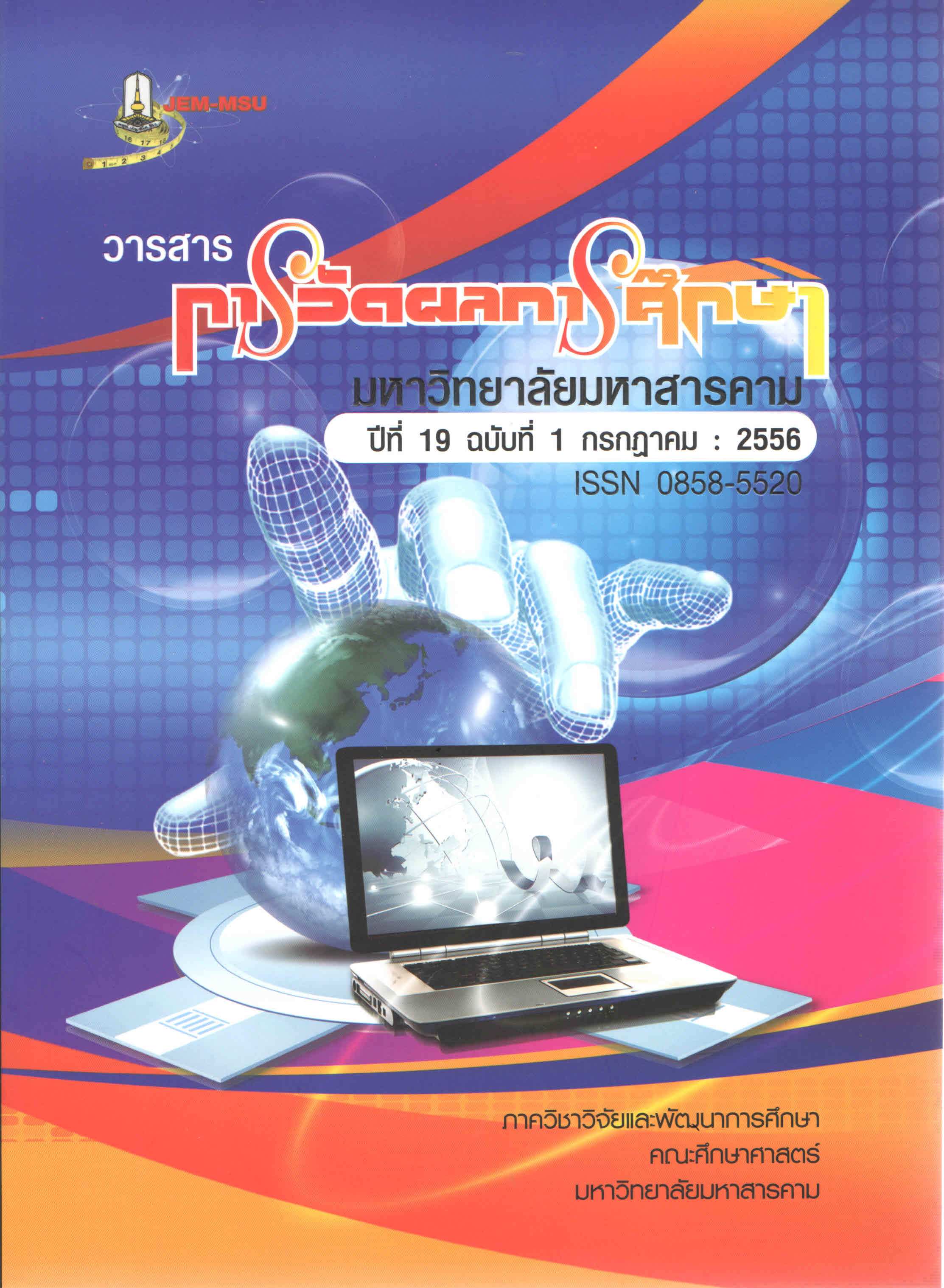Comparisons of Thai reading comprehension ability of Mathayomsuksa 1 students by Think aloud technique and reading conventional approach.
Main Article Content
Abstract
Learning the techniques of reading Think aloud gives students the ability to understand a
lot more about those topics. By the way, this approach focuses on teaching students to learn to
understand the thought processes of those topics. This way of thinking into words. This approach
will allow students to see how the process is the understanding of those topics. The purposes of
this research were : 1) to compare the post-experiment Thai reading comprehension ability
between the experimental group of student who had practiced their reading comprehension with
the think aloud reading and control group of studies who practiced their reading comprehension
with normal technique 2) to compare Thai reading comprehension, analytical thinking abilities of
Matthayomsuksa 1 students by Think aloud technique and reading conventional teaching
approach. 3) to examine learning Thai reading comprehension ability of Matthayomsuksa 1 students
taught using by Think aloud technique and reading conventional teaching approach. The sample
used in the study consisted of 60 Matthayomsuksa 1 students at Chomchonnakamhiwittaya
School, Amphoe Mueang, Nongbualamphu province in the second semester of the academic year
2011, obtained using the purposive sampling technique. They were assigned into an experimental
group and a control group, 30 students each group of 30 students who were taught using the
conventional teaching approach. Two types of the instruments used in this study were learning
plans according think aloud reading instruction ,5 plans 10 hours and traditional learning plans, 5
plans 10 hours ; 4 choice achievement test : Test 1 was a 30-item reading comprehension test
with difficulties (p) ranging 53 - .84 , discriminating powers (B) ranging .23-.61 and a reliability of .78
; Test 2 was a 30-item test of choice test of analytical thinking ability with difficulties (p) ranging
.30 - .84 , discriminating powers (r) ranging .20-.80 and a reliability of .88. The statistics used for
analyzing the collected data were mean and standard deviation ; t – test (Dependent Samples),
Hotelling’s T2 were employed for testing hypotheses. The results of the study were as follows :
1. Matthayomsuksa 1 students in the experimental group taught using the think aloud
technique reading and those in the control group taught using the conventional teaching approach
showed gains in Thai reading comprehension from before learning at the .05 level of significance.
2. The students taught think aloud technique reading indicated mean scores on Thai
reading comprehension achievement, the conventional teaching approach and satisfaction with
learning and teaching than those taught using the conventional teaching approach at the .05 level
of significance.
3. The students taught using think aloud technique reading could retain knowledge 2
weeks after learning at 96.54 percent of the posttest mean score which was not different from the
posttest mean score.
In conclusion, teaching Thai reading comprehension by think aloud technique. It was
efficient in helping the learners have higher Thai reading comprehension, and know how to think
analytically. Therefore, Thai teachers should be learning to develop their reading skills in the
future.
Article Details
The content and information contained in the published article in the Journal of Educational Measurement Mahasarakham University represent the opinions and responsibilities of the authors directly. The editorial board of the journal is not necessarily in agreement with or responsible for any of the content.
The articles, data, content, images, etc. that have been published in the Journal of Educational Measurement Mahasarakham University are copyrighted by the journal. If any individual or organization wishes to reproduce or perform any actions involving the entirety or any part of the content, they must obtain written permission from the Journal of Educational Measurement Mahasarakham University.

